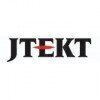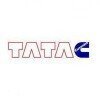Filter interviews by
Bosch Interview Questions and Answers
145 Interview questions
A fire hydrant is a vital water source for firefighters to access during emergencies, ensuring rapid response to fires.
Provides quick access to water for firefighting efforts.
Typically painted bright colors for visibility.
Connected to underground water mains.
Can be used by firefighters with hoses to extinguish fires.
Regular maintenance is essential to ensure functionality.
A CO2 flooding system is a fire suppression method using carbon dioxide to extinguish flames by displacing oxygen.
CO2 flooding systems are commonly used in data centers to protect sensitive equipment.
They work by releasing CO2 gas, which reduces the oxygen level below what is needed for combustion.
These systems are effective in enclosed spaces where traditional water-based systems may cause damage.
CO2 flooding sys...
Ohm's Law states that voltage equals current times resistance, forming a fundamental relationship in electrical circuits.
Ohm's Law formula: V = I × R, where V is voltage, I is current, and R is resistance.
Example: If a circuit has a current of 2A and resistance of 5Ω, the voltage is V = 2A × 5Ω = 10V.
It helps in calculating the required resistance for desired current in circuits.
Used in designing electrical system...
Safety tools are essential for protecting machine operators from hazards and ensuring a safe working environment.
Personal Protective Equipment (PPE) - Includes gloves, helmets, and safety goggles.
Lockout/Tagout devices - Used to ensure machines are properly shut off during maintenance.
Safety guards - Physical barriers that prevent access to moving parts.
Emergency stop buttons - Quickly halts machine operation in c...
5S is a workplace organization method that improves efficiency and safety through five steps: Sort, Set in order, Shine, Standardize, Sustain.
Sort: Remove unnecessary items from the workspace. Example: Discarding broken tools.
Set in order: Organize tools and materials for easy access. Example: Labeling storage areas.
Shine: Clean the workspace regularly to maintain a safe environment. Example: Daily cleaning routin...
Bosch Power Tools faces competition from brands like Makita, DeWalt, and Black & Decker in the Indian market.
Makita: Known for its high-quality power tools, especially in woodworking and construction.
DeWalt: Offers a wide range of durable power tools and accessories, popular among professionals.
Black & Decker: Focuses on affordable and user-friendly tools for DIY enthusiasts and home improvement.
Bosch is a global engineering and technology company known for its innovative solutions in various sectors.
Founded in 1886 by Robert Bosch in Stuttgart, Germany.
Operates in sectors like mobility solutions, industrial technology, consumer goods, and energy and building technology.
Known for its commitment to sustainability and innovation, such as developing smart home technologies.
Bosch's automotive division is a le...
I prioritize clear communication, empathy, and proactive problem-solving in customer interactions.
Establish clear communication: Use simple language to explain technical concepts, ensuring the customer understands.
Practice active listening: Pay attention to customer concerns and ask clarifying questions to fully grasp their needs.
Be empathetic: Acknowledge customer frustrations and reassure them that their issues ...
System engineering is an interdisciplinary approach to designing and managing complex systems throughout their life cycles.
Focuses on the entire system lifecycle, from conception to decommissioning.
Integrates various disciplines such as hardware, software, and human factors.
Uses modeling and simulation to predict system behavior (e.g., aerospace systems).
Emphasizes requirements analysis to ensure the system meets ...
DMAIC is a data-driven quality strategy used for process improvement in Six Sigma.
Define: Identify the problem and project goals. Example: Reducing patient wait times in a clinic.
Measure: Collect data to understand current performance. Example: Measuring average wait times over a month.
Analyze: Identify root causes of defects or issues. Example: Analyzing data to find bottlenecks in patient flow.
Improve: Develop a...
Bosch Interview Experiences
350 interviews found
Production Engineer, Production & Material Planning Interview Questions & Answers
posted on 15 Dec 2020
I applied via Naukri.com and was interviewed before Dec 2019. There were 3 interview rounds.
Interview Questionnaire
4 Questions
- Q1. What is takt time?
- Ans.
Takt time is the rate at which a product must be produced to meet customer demand.
Takt time is calculated by dividing the available production time by the customer demand.
It helps in determining the production rate needed to meet customer demand.
Takt time is used in lean manufacturing to eliminate waste and improve efficiency.
For example, if the customer demand is 100 units per day and the available production time is ...
- Q2. What is line balancing?
- Ans.
Line balancing is the process of evenly distributing work tasks among production line workers.
Line balancing aims to minimize idle time and maximize productivity.
It involves analyzing the tasks required in a production process and assigning them to workers in a way that optimizes efficiency.
The goal is to ensure that each worker has a similar workload and that no worker becomes a bottleneck.
Line balancing can be achiev...
- Q3. What is lean and Kannan?
- Q4. What is man management?
- Ans.
Man management is the process of effectively leading and directing a team of individuals towards achieving a common goal.
It involves motivating and inspiring team members
It requires effective communication and delegation skills
It involves setting clear goals and expectations
It requires the ability to handle conflicts and resolve issues
It involves providing feedback and recognition to team members
Examples include managi...
Interview Preparation Tips
I appeared for an interview in Feb 2025.
(4 Questions)
- Q1. Manpower reduces
- Ans.
Manpower reduction can lead to decreased productivity, increased workload on remaining employees, and potential quality issues.
Decreased productivity due to fewer workers available to complete tasks
Increased workload on remaining employees, leading to burnout and decreased morale
Potential quality issues as employees may rush through tasks to compensate for reduced manpower
- Q2. Manpower working place chute nearly
- Q3. Process multiple one operator
- Ans.
Process multiple tasks efficiently with one operator
Implement lean manufacturing principles to streamline processes
Utilize automation and robotics to reduce manual labor
Train operators on multitasking and time management skills
Use software systems to track and optimize workflow
Invest in versatile equipment that can handle multiple tasks
- Q4. Cycle time reduce
Standard process in hackerrank
(2 Questions)
- Q1. Standard interview with live coding
- Q2. Find the second largest element in an array
- Ans.
Find the second largest element in an array of strings.
Convert the strings to integers for comparison.
Sort the array in descending order.
Return the element at index 1 as the second largest.
(1 Question)
- Q1. Describe yourself in 3 words
I appeared for an interview in Sep 2024.
(4 Questions)
- Q1. I had given interview through referal.so TR and HR rounds are combined.They had asked simple java questions based on oops concept and told me to write code for method overloading and overiding. and some si...
- Q2. Constructure and different types of constructure
- Ans.
Constructure refers to the arrangement and organization of elements in a structure, with various types serving different purposes.
1. Definition: Constructure is the way components are arranged in a system or structure.
2. Types: Common types include physical constructure (buildings), conceptual constructure (theories), and social constructure (organizations).
3. Example of physical constructure: A skyscraper's design inv...
- Q3. Crud operations and polymorphism topic
- Q4. Questions regarding project
Interview Preparation Tips
(5 Questions)
- Q1. What is Supply chain management
- Ans.
Supply chain management involves the coordination and optimization of all activities involved in the sourcing, procurement, production, and logistics of goods and services.
Involves the coordination of suppliers, manufacturers, distributors, and retailers
Focuses on optimizing processes to minimize costs and maximize efficiency
Includes activities such as inventory management, demand forecasting, and transportation planni...
- Q2. Working process
- Q3. Inventory target
- Q4. Import exports report document maintenance
- Q5. Customs clearance document
A group discussion (GD) is a conversation where a group of people come together to talk about a specific topic or issue. The goal is to share ideas, express opinions, and engage in a constructive exchange of thoughts. It’s often used in educational settings, interviews, or team environments to assess communication skills, problem-solving abilities, and teamwork.
Participants typically discuss a topic, listen to each other, and respond accordingly, all while maintaining a respectful and open-minded approach.
(1 Question)
- Q1. Associat manager
I appeared for an interview in May 2025, where I was asked the following questions.
- Q1. What are the basic roles associated with the department in which you were involved?
- Ans.
The department focuses on project management, quality assurance, and team collaboration to achieve organizational goals.
Project Management: Overseeing project timelines and deliverables, ensuring tasks are completed on schedule.
Quality Assurance: Implementing processes to maintain high standards in project outputs, such as regular audits.
Team Collaboration: Facilitating communication among team members to enhance produ...
- Q2. How do you intend to implement your approach in the role we are offering?
- Ans.
I plan to implement a proactive, collaborative approach to excel in the Graduate Apprentice role, focusing on learning and contribution.
Engage actively with team members to understand ongoing projects and contribute effectively.
Utilize feedback loops to continuously improve my skills and adapt to the team's needs.
Set clear, achievable goals for my learning and contributions, such as mastering specific tools or processe...
- Q3. What challenges do you anticipate facing while handling associates?
- Ans.
Handling associates presents challenges like communication, motivation, and conflict resolution that require effective management skills.
Effective Communication: Misunderstandings can arise; for example, unclear instructions may lead to errors in tasks.
Motivation: Keeping associates engaged can be tough; for instance, recognizing achievements can boost morale.
Conflict Resolution: Disagreements may occur; mediating betw...
(2 Questions)
- Q1. Project explanation
- Ans.
Developed a web-based application for managing project tasks and team collaboration.
Utilized React for the front-end to create a responsive user interface.
Implemented Node.js and Express for the back-end API to handle data requests.
Integrated MongoDB for efficient data storage and retrieval.
Employed RESTful principles for API design, ensuring scalability.
Incorporated user authentication using JWT for secure access.
- Q2. C syntaxes, questions on arrays pointers
(2 Questions)
- Q1. Coding related to pointers
- Q2. Recursion program
Easy Question i.e leetcode easy to medium
(2 Questions)
- Q1. Simple Question on strings
- Q2. Question on your projects
I appeared for an interview in Sep 2024.
(2 Questions)
- Q1. What this your self
- Q2. Your roll and response
- Ans.
As Store Incharge, I oversee inventory management, staff coordination, and customer service to ensure smooth store operations.
Manage inventory levels to prevent stockouts and overstock situations.
Coordinate with staff to ensure efficient store operations, such as scheduling shifts.
Implement customer service strategies to enhance the shopping experience, like greeting customers.
Analyze sales data to identify trends and ...
(3 Questions)
- Q1. Your working in hosur
- Ans.
Yes, I am currently working in Hosur.
I am currently employed at a store in Hosur.
I have been working in Hosur for the past few years.
I am familiar with the local market and customer base in Hosur.
- Q2. Yes working rashtriya
- Q3. Yes working in hosur
I applied via Approached by Company and was interviewed before Apr 2021. There were 2 interview rounds.

(2 Questions)
- Q1. Asked about range of products which I was handling in previous organisation
- Q2. Asked about any trial and demonstrations which I did in previous organisations at customer for beating competition
Interview Preparation Tips
Top trending discussions






Bosch Interview FAQs
Some of the top questions asked at the Bosch interview -
The duration of Bosch interview process can vary, but typically it takes about less than 2 weeks to complete.
Tell us how to improve this page.
Bosch Interviews By Designations
- Bosch Assistant Manager Interview Questions
- Bosch Software Engineer Interview Questions
- Bosch Intern Interview Questions
- Bosch Senior Engineer Interview Questions
- Bosch Senior Software Engineer Interview Questions
- Bosch Graduate Apprentice Interview Questions
- Bosch Associate Software Engineer Interview Questions
- Bosch Graduate Engineer Trainee (Get) Interview Questions
- Show more
Interview Questions for Popular Designations
- Assistant Manager Interview Questions
- Software Engineer Interview Questions
- Intern Interview Questions
- Senior Engineer Interview Questions
- Senior Software Engineer Interview Questions
- Graduate Apprentice Interview Questions
- Associate Software Engineer Interview Questions
- Graduate Engineer Trainee (Get) Interview Questions
- Show more
Overall Interview Experience Rating
based on 288 interview experiences
Difficulty level
Duration
Interview Questions from Similar Companies
Bosch Reviews and Ratings
based on 4.2k reviews
Rating in categories
|
Senior Engineer
888
salaries
| ₹8.6 L/yr - ₹15 L/yr |
|
Senior Software Engineer
868
salaries
| ₹10.7 L/yr - ₹20 L/yr |
|
Assistant Manager
691
salaries
| ₹9.7 L/yr - ₹16.5 L/yr |
|
Software Engineer
535
salaries
| ₹4.9 L/yr - ₹11.6 L/yr |
|
Deputy Manager
530
salaries
| ₹14.7 L/yr - ₹26.3 L/yr |

Yazaki

Faurecia

Valeo

Continental Automotive Components
- Home >
- Interviews >
- Bosch Interview Questions













